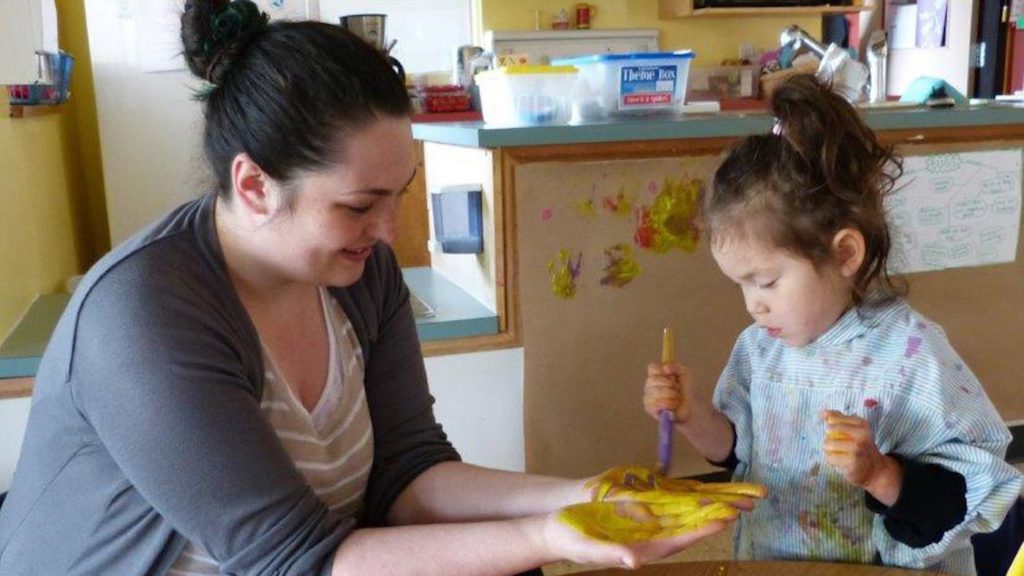
In South Victoria, the Canadian Centre for Policy Alternatives’ postal code index indicates only 19% of families have access to adequate daycare coverage—and falls into the orange category, or what the centre calls a daycare “desert.”
Last week, the Ministry of Education and Childcare announced that, as of Jan. 1 next year, eligible early childhood educators (ECE) who work in licensed facilities in the CRD will receive an across-the board $2-per-hour wage increase, part of a provincial Wage Enhancement initiative. The move is meant to bring additional financial security and appeal to a sector deeply struggling with recruitment and retention woes.
Total wage enhancements since 2019 bring the median ECE wage close to roughly $28 per hour but, as Emily Mlieczko, executive director of the Early Childhood Educators of BC (ECEBC) told Capital Daily, that’s “only the case if your program’s wage was already at $22. For those programs still paying $18, the enhancement still only means a total wage for ECEs of $21.”
During the first year of the agreement with the federal government, the province created 1,200 additional daycare spaces, but, as was reported by Capital Daily earlier this year, that number lands nowhere near the provincial goal of creating 30K spaces over four years under the agreement’s funding formula. That’s because creating enough affordable child-care spaces is one thing—reducing the systemic workforce issues that undermine their resourcing is another. The wage increase gets at two of the most enduring sticking points for the province and for the sector.
SEE ALSO:
- More capacity to implement BC federal child-care agreement is needed
- Victoria looking at measures to address gap of 4,431 child-care spaces
The government offered to double the number of ECE training seats and in March, announced study bursaries that cover the majority of ECE tuition fees, based on program costs.
This winter, ECEs who hold an infant toddler educator or special needs educator certification were able to apply for a further $2K per year in study bursaries. In addition, ECEs who hold both certificates are eligible to receive $3K per year for their studies through the province’s ECE Education Support Fund. The catch? Would-be students have to pay their full tuition fees up front and be reimbursed later.
Not everyone can afford to do that.
And the study options are great for people just getting into the field, but they may not be as advantageous for people already in the occupation, people—mostly women—with busy lives in and outside of work.
Taking time to study can also mean time away from work, leaving already resource-stretched child-care centres scrambling to cover the training needs of their staff. Even peer mentoring opportunities can prove difficult, said Mlieczko. In an earlier interview for the Early Childhood Educators of British Columbia Peer Mentoring Project, Mlieczko said it’s “difficult to have a day off to visit other centres because we’re all working at the same time.”
Poor recruitment and retention, made worse by lack of benefits, defined pension plans and poor working conditions, have presented a major roadblock to getting Victoria’s kids into affordable child-care options.
Recognition of the challenge is echoed in the words of federal Minister of Families, Children and Social Development Jenna Sudds who, at the announcement said, “If we are to succeed in building an early learning and child-care system for families across the country, we need a dedicated, well-compensated and valued early childhood workforce.”
While the value of the sector has never been in doubt, wages and benefits must reflect the message that ECE is indeed a viable, sustainable and competitive career option. A recent ECEBC report showed that 75% of British Columbians consider child care an essential service. And while the report also says that 71% of British Columbians consider child-care workers as professionals, a CUPE survey reveals that ECE workers feel that their credentials earn them far less than others with similar educational backgrounds.
For this reason, CUPE has called for the province to implement wage grids for ECEs, and while it remains unclear when this may happen, the province says “it is committed to developing a wage grid for ECE.”
Wage grids consider factors such as experience, education, certifications, legislative requirements and regional sector labour trends. They help to solidify fair wage expectations for workers. Federal affordable child-care funding and the new wage enhancement initiatives represent important pieces in the puzzle of how to improve access to affordable child care for families in the CRD, but underlying structural issues still plague them both.
Sidney Coles, Local Journalism Initiative Reporter, Capital Daily


 Local Journalism Initiative
Local Journalism Initiative

